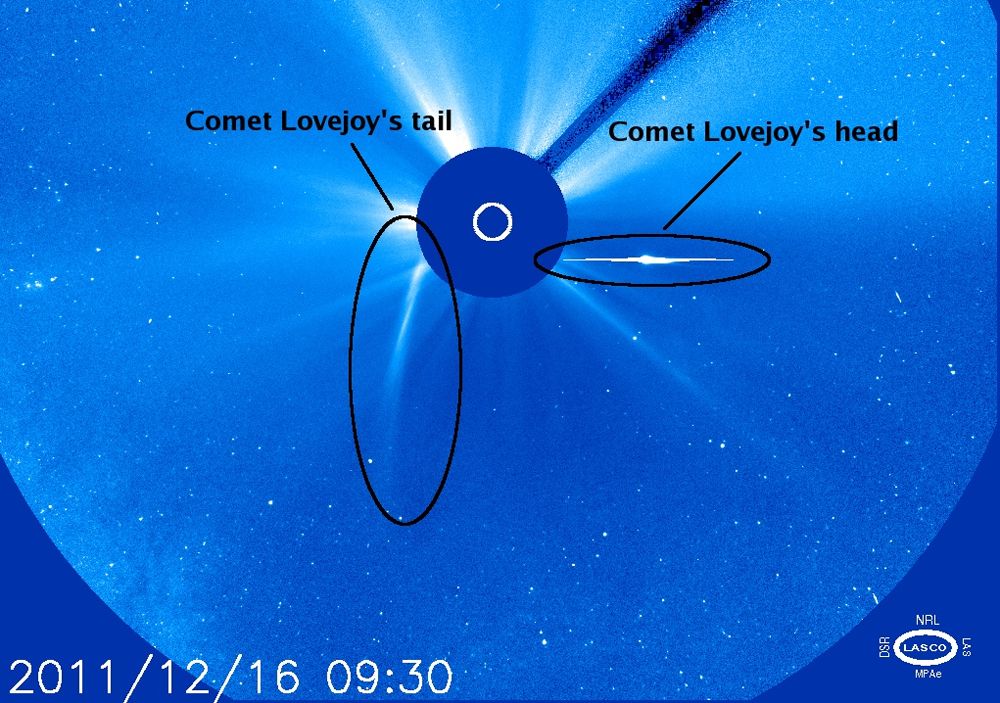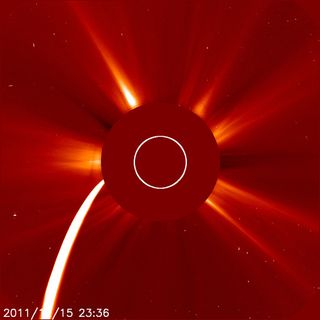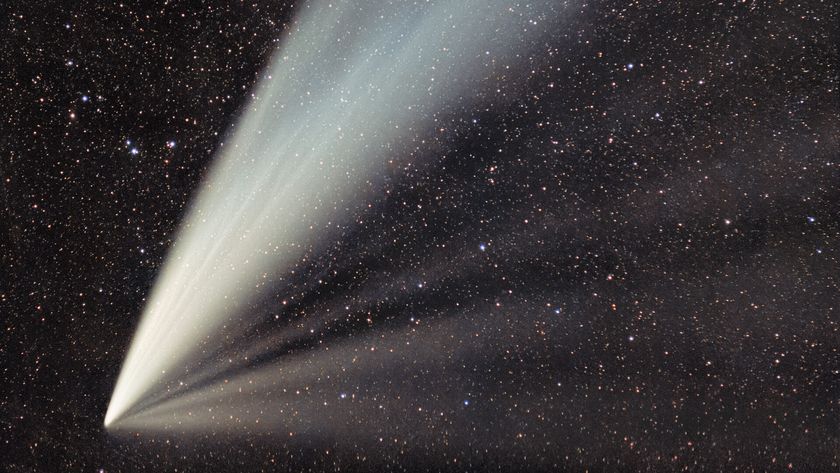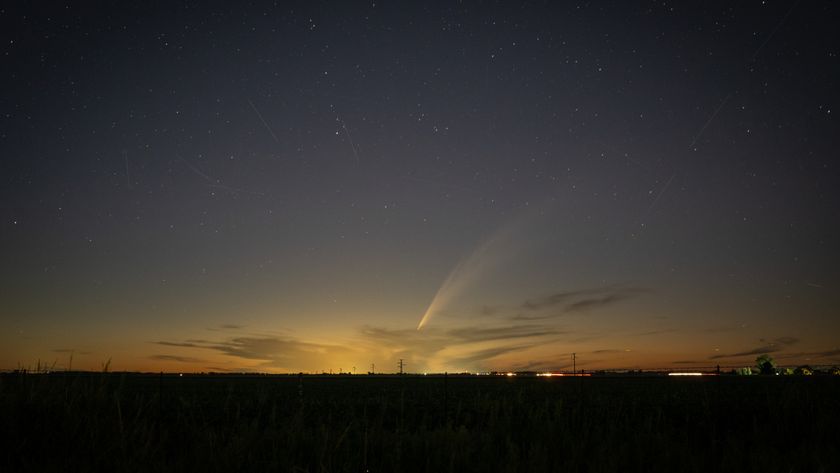Sun Rips Tail From Comet During Solar Close Encounter

A newfound comet that plunged through the sun's atmosphere Thursday (Dec. 15) — and amazingly survived — was visibly maimed by the encounter, which left the icy wanderer without its long, bright tail, a scientist says.
According to Karl Battams, a solar researcher at the U.S. Naval Research Center in Washington, the death-defying comet Lovejoy slipped through the sun's outer atmosphere (called the corona) with a bright tail in tow, only to reappear tailless on the other side.
The comet zoomed within 87,000 miles (140,000 kilometers) of the sun's surface, making its closest approach at about 7 p.m. EST Thursday (midnight GMT on Dec. 16). Instruments called coronographs aboard several sun-watching space observatories caught the unexpected solar sight.
"Somehow it survived being immersed in the several million-degree solar corona for almost an hour and has now re-emerged back into the views of the LASCO and SECCHI coronagraphs, almost as bright as before!" Battams wrote on his website Sungrazing Comets. "The only notable exception is that it appears to have lost its tail … In fact its tail is still gently floating out in space where it was before perihelion!" [Photos of Death-Defying Comet Lovejoy]
A labeled photo of comet Lovejoy and the sun after their encounter posted by Battams clearly shows a tail-like feature on one side of the sun and the head of the comet on the other. The tail may be older dust and gas ejected by comet Lovejoy before it entered the sun's corona that is still traveling on the same trajectory, Battams wrote.
But while comet Lovejoy may be mutilated by its sun encounter, comet fans shouldn't worry too much. "I'm pretty confident that we will see Comet Lovejoy grow a new one," Battams wrote.
Comet tails are created when their icy surfaces warm up, creating a gas that gets blown outward by the sun's solar wind. Charged particles from the sun can also turn some of a comet's gases into charged ions to form an ion tail. Comet tails always point away from the sun.
Sign up for the Live Science daily newsletter now
Get the world’s most fascinating discoveries delivered straight to your inbox.
The unexpected survival of comet Lovejoy has amazed Battams and other astronomers because most comets that have close encounters with the sun are destroyed. In fact, many researchers predicted the comet would likely fizzle out, as the chances of its survival were so low.
"What an extraordinary 24hrs!" Battams wrote. "I was wrong. Wrong, wrong, wrong. And I have never been so happy to be wrong!"

Australian amateur astronomer Terry Lovejoy, who discovered the comet on Nov. 27, told SPACE.com that the attention his find has received has been amazing, and that he was happy to make a contribution to astronomy.
"It's been tremendous," Lovejoy told SPACE.com just hours before the comet's swing through the sun. "Apparently it's all over Facebook, and I don't use Facebook. But there's a lot of interest. I think a lot of people like the name — the Lovejoy name seems to strike a chord with people."
This story was provided by SPACE.com, a sister site to LiveScience. SPACE.com assistant managing editor Clara Moskowitz (@ClaraMoskowitz) contributed to this story. You can follow SPACE.com Managing Editor Tariq Malik on Twitter @tariqjmalik. Follow SPACE.com for the latest in space science and exploration news on Twitter @Spacedotcom and on Facebook.

Tariq is the editor-in-chief of Live Science's sister site Space.com. He joined the team in 2001 as a staff writer, and later editor, focusing on human spaceflight, exploration and space science. Before joining Space.com, Tariq was a staff reporter for The Los Angeles Times, covering education and city beats in La Habra, Fullerton and Huntington Beach. He is also an Eagle Scout (yes, he has the Space Exploration merit badge) and went to Space Camp four times. He has journalism degrees from the University of Southern California and New York University.












